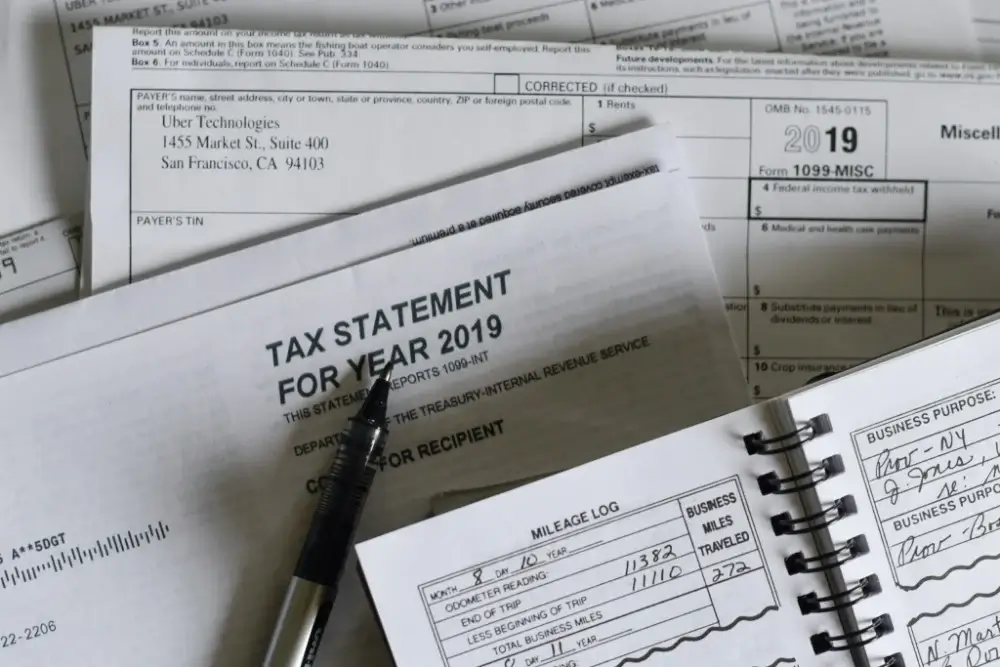How Much Should an Emergency Fund Be?
An emergency fund is crucial for any financial plan protecting you against unexpected events. For example, when a health-related emergency arises, there's a deductible that you must pay. Sometimes it might be 20% out of pocket for the cost," which might represent several thousand dollars in out-of-pocket health insurance costs.
But how much should you save and have in your emergency fund? You don't need an emergency fund calculator to figure out how much money you need to save for an emergency fund.
The amount you need in your emergency fund will depend on various factors, including your monthly income, job stability, expenses, and debts.
However, you can follow some general guidelines to determine how much you should have saved for emergencies. And what counts as an emergency?
In this article, we will discuss how much to save and have in your emergency fund and what expenses it can cover. We will also provide tips on how to build your emergency fund so that you can be prepared for any unexpected event!
What is a good emergency fund amount?
The perfect emergency fund amount is determined by various factors, including your lifestyle and the needs of those who depend on you.
The general rule of thumb is to have up to three to six months' worth of expenses saved at any given time. Although, some experts suggest that you keep a smaller emergency fund while you're paying off your debts.
Rule of thumb for how much emergency fund you'll need
Most financial experts suggest that you have three to six months' worth of living expenses available for an emergency. This will help you avoid the risk of not having enough money if something goes wrong.
The range of three to six months of living expenses seems relatively large, but knowing how far to target depends on several things, such as lifestyle and health condition.
Saving up a year of living expenses is advisable since you'll be financially prepared when facing riskier situations like major illnesses and accidents or job loss. In short, when it comes to your risky life, consider saving more versus less.
How much is the average emergency savings in the USA?
Even in America, life can be challenging. The sad situation is that 64% of the population was living paycheck-to-paycheck, with just 53% able to cover unforeseen expenses of only $500 like repairing their car. It gets even worse when they have $1,000 in unplanned costs, where only 44% of Americans have enough money saved to cover that kind of unforeseen expense at any given time.
The Federal Reserve reports that the American family has a median balance (checking and savings combined) of $5,300. When you consider monthly living expenses for one person in America who is single at an average cost of $3,189 per month or $7,095 for a family of four, it becomes clear how much this impacts our day-to-day lives as families!
Almost every financial expert has suggested putting three to six months' worth of expenses on an emergency account. This means setting aside $3 to $6 for every dollar you spend in a month in case of an emergency.
Let's use the following example. Let's suppose that you live by yourself and your basic living expenses are $3,189 per month. If we multiply your monthly expenses by three and six, you need to have an emergency fund that will work as a safety net of $9,567 and $19,134.
This amount is just for emergencies only, and this amount doesn't count towards a family vacation, retirement plan, the down payment for purchasing a house, or a new car. And it doesn't take into consideration if you have children or other dependents.
If you don't have at least between $10,000 to $20,000 as emergency savings, you have to find a way to close the gap as soon as possible! But don't get discouraged and overwhelmed.
Even a tiny amount could represent a considerable difference. When you save your first $500 as an emergency fund, you'll pass to be a member of the 53% of Americans who have extra cash and can afford $500 of unforeseen expenses.
You don't want to miss out on saving for emergencies! So, start saving today, and you will be prepared when the time comes.

What if you are self-employed?
When you are self-employed, you don't have the luxury of having a regular income. But, even though you don't have a set income, you should still plan for the unexpected and save as much as possible.
A good rule of thumb is to put away at least 20% of your monthly income into savings. This will help you cover unanticipated expenses, like a car repair or a medical bill, without putting a strain on your personal finance.
What is an emergency fund?
An emergency fund is an emergency savings fund that you keep in a savings account with a competitive interest rate to cover unanticipated expenses such as car repairs, medical bills, home repairs, or job loss.
An emergency fund should be separate from your other savings goals, like retirement or a down payment on a house. If possible, keep your emergency fund in a different financial institution from where you keep your retirement account. This way, you won't be tempted to spend money on non-essential items.

Where should you keep an emergency fund?
A bank account that links with a checking account is ideal for emergency funds. Use a high-yield savings account, separate from your retirement savings account.
Even though we don't recommend using a debit card, in this case, it seems not only convenient but necessary to have quick access to your funds in case of an emergency.
If you want, you can open your savings account online. You can start using savings and checking accounts with another bank on the internet and have the funds transferred into your new account in less than two working days.
What about regular savings accounts?
Emergency savings can be kept within a normal savings account, though it is not always the most appropriate. But, they have a tendency not to meet the inflationary pressure. Decide to open a higher interest account to keep funds available for unexpected expenses. Your emergency fund should be neither in stock (non-stable) nor in house value (inaccessible).
Emergency savings
Emergency savings are important, but so are other savings goals. Your emergency fund is not for long-term savings or investments. It is to cover unanticipated expenses in the short term.
Once you have built up your emergency fund to cover three to six months of living expenses, you can start putting money towards other financial goals, such as retirement or a down payment on a house.

Top savings account for an emergency fund.
Perhaps the cheapest way to keep a cash reserve for emergencies in the bank is to open an investment fund. This account offers borrowers maximum interest on savings, as it also provides the level of liquidity necessary to fund a disaster fund and other emergency funds. We suggest that these should also be considered in a bank savings account.
Capital One 360
Capital One's major strengths are its ability to provide an online banking platform to all customers. Unlike most online bank branches specializing in e-wallet deposits, Capital One offers a range of credit and mortgage programs. Capital One 360 Performance Savings offers the best-paying accounts, paying interest rates 20 x higher than the national average. I strongly recommend it!
Citi, the account from CitiBank
Citibank is a major bank in the US offering savings accounts yielding over a huge 0.60% APY to investors. There is no minimum deposit to open an account and no minimum balance to earn interest. The standard insurance amount by FDIC is $250,000 per depositor, per insured bank.
Discover Online Savings
Discover is an internationally leading credit card services provider that offers some of the best cashback offers. They've also been a key player in high-yield deposits. The primary bank accounts they hold are Discover Online Savings Accounts.
High-yield savings account
It's similar to other accounts, but they also pay higher interest. Online banks are cost-effective to use and operate compared to traditional banks, allowing them to offer more attractive interest rates.
What's available on the web: Most links can be found on the banks' websites or online banking sites.
How long does it take to save 6 months' salary?
To save six months' expenses, you must have a plan and be disciplined with your spending. A different question would be, how much are you willing to save every month?
Establish a goal and stick to your plan. Set a specific dollar amount and automate the transfer of such amount from your checking account, where you receive your direct deposit, to your savings account. Automating your saving process will allow you to reach your goal quickly.
Let's do the Math. Assuming that your living expenses are $3,189 per month. And let's say that you can save only 10% of your income per month, representing $319 per month. It would take you ten-month to save your first months' worth of expenses.
Saving extra money can go a long way. If you can save more money, let's now assume that you can follow the 50/30/20 rule and save 20% of your expenses; in only five months, you will be able to reach your initial savings goal of one month of expenses.

How to speed up the process of saving money for your Emergency Fund?
Creating your emergency fund will become one of your most important financial decisions.
There are many financial products out there. Ensure that your account puts your money in an FDIC-insured account. The last thing you want to confront yourself is with the reality that you have lost your money because you invested it in a high-risk industry.
One excellent way to speed up creating the emergency fund you need to save is to deposit your tax refund into the account where you are creating your emergency fund.
If you are using one of many money market accounts, make sure it can be accessed easily without taxes or penalties.
Money market accounts are excellent because they offer you a higher interest rate than a savings account but still provide you with liquidity in case of an emergency.
If you want to be successful in saving money, it is essential that you have a plan and know where your money is going.

Bottomline
Building an emergency fund is an essential element of your personal finance and is one of the best ways to avoid the headache related to having an additional credit card debt or even a personal loan to deal with, or even personal bankruptcy.
An initial amount set aside for emergencies can mean all the difference in whether you have just an unexpected expense but no further financial problems.
How much should you have in your emergency fund? There is no one definitive answer to how much to save. The amount you need in your emergency fund will vary depending on various factors, including your income, job stability, expenses, and debts.
However, many financial advisors and experts recommend saving between three to six months' worth of expenses.
I hope this article has given you a good starting point that will allow you to make informed financial decisions on how much you need to save based on your current income and other factors.
Let me know in the comment below how much you currently have saved and whether you plan to increase that amount after reading this article. Thanks for reading!
